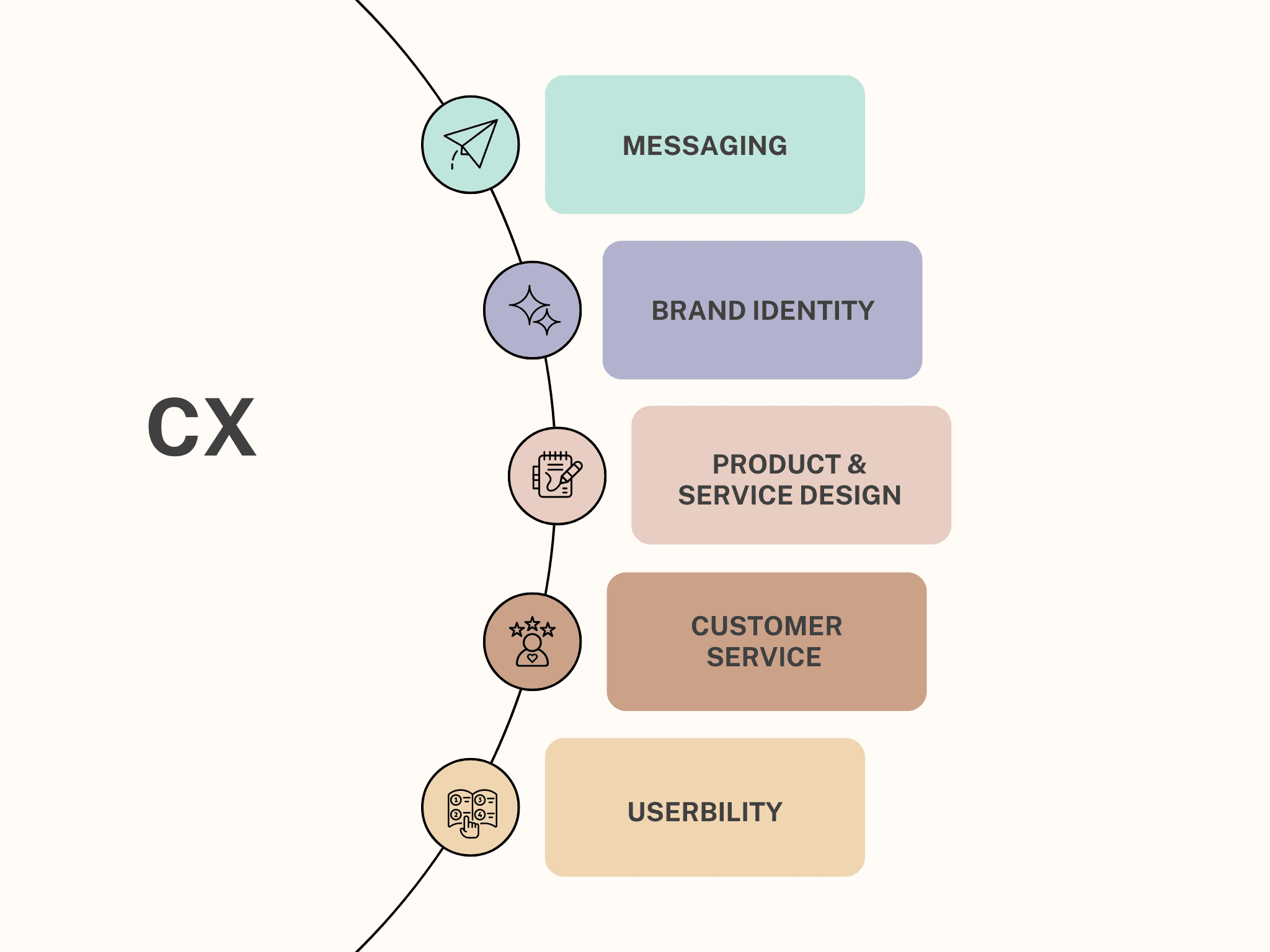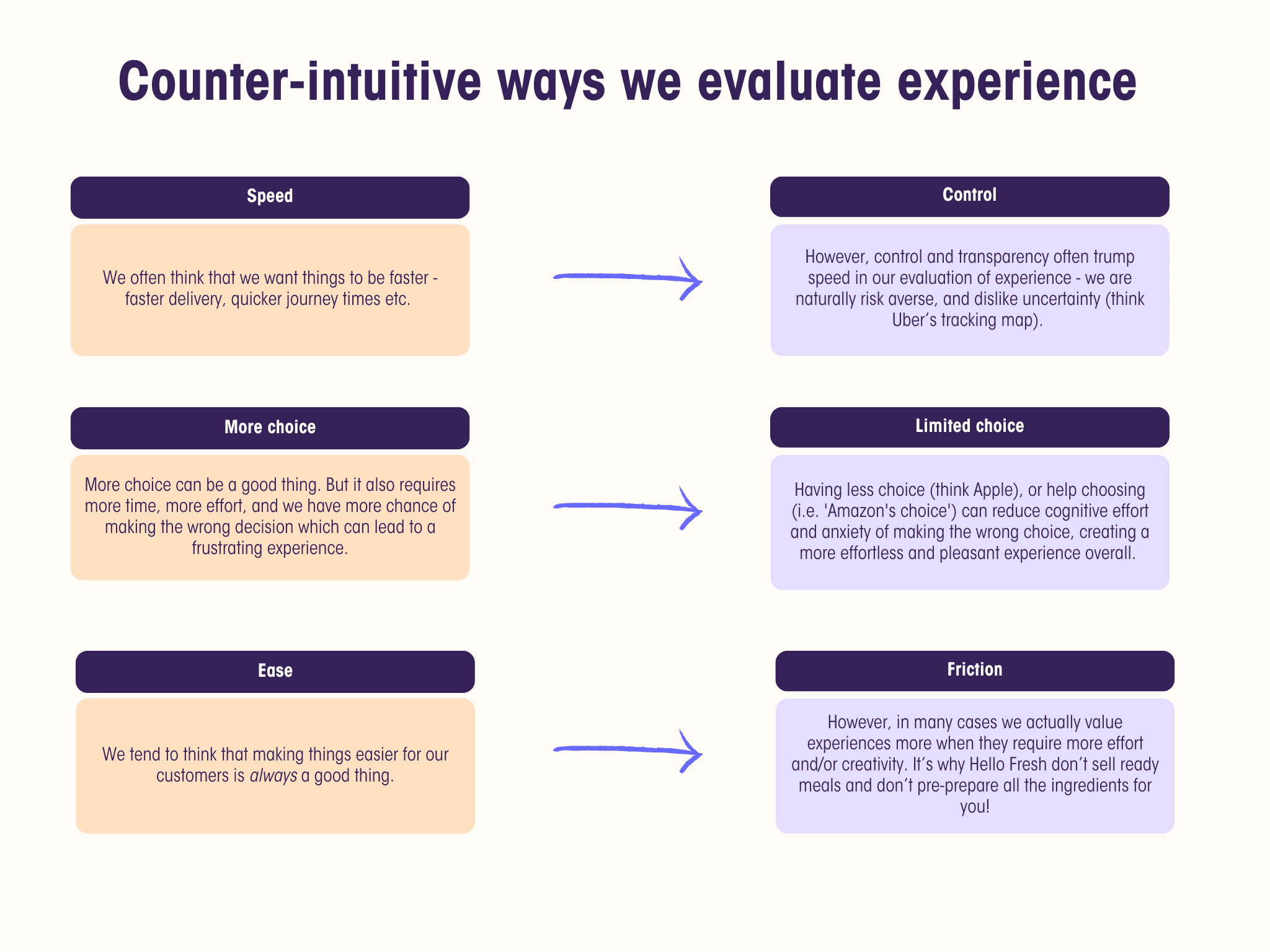Supercharging CX with behavioural science
by Gus Allen, CEO at Beyond
1. Introduction to Behavioural Science in CX
One of the key benefits of using a behavioural lens is its ability to uncover and reveal behavioural influences that are often counterintuitive, illogical, and difficult to identify through everyday thinking.
For example, there’s a big difference between how we think we perceive and evaluate experiences and how we actually do it in reality. A neat example of this is known as the peak-end rule.
The rule is based on behavioural research which shows us that, despite feeling like we evaluate experiences fairly and objectively, we actually judge them largely based on how we feel at the end of an experience and during its emotional ‘peaks’.
Uber applied this insight to their customer journey, designing it to ensure a smooth finish. They did this by employing upfront payment, where the customer simply leaves the car without needing to handle cash or card transactions, avoiding the ‘pain of paying’ right at the most important part of the experience. This seamless end to the experience also reinforces the perception of ease and convenience of the overall journey.
Another simple yet effective example of behavioural design comes from a London restaurant chain who sought to increase cocktail sales among male customers. Research showed that some men had a gendered association of cocktail glasses, leading to anxiety about the type of glass their drink would arrive in.
To address these emotional and social frictions, the menu was adjusted to include pictures of the glass that each cocktail was served in. This small tweak in menu design offered the transparency and sense of control these men needed to order a cocktail with confidence.
Examples like these highlight the significant opportunity for brands to enhance customer experience (CX) by applying a deeper understanding of the psychology of experience, often through small yet impactful adjustments to their products, services, and messaging.
What do we mean by customer experience?
Customer experience is often viewed through a narrow lens - focusing on aspects like product usability or customer service.
However, to create truly compelling experiences, we must consider a customer’s entire 'lived experience' of a brand, from the first moment of awareness through to purchase, and beyond to any ongoing relationship.
CX relates to every single touch point with your customer: messaging, brand, website, product, usability, customer support and more. While this may seem like a lot to consider, the good news is that it also means there are opportunities at every step to improve the experience and differentiate from competitors.

How we process and evaluate experience is highly subjective and driven by unconscious traits
If you think about it, our brains are actually locked in a dark box trying to make sense of the world. Generating experiences is a highly subjective process guided by certain mental traits where our brains attempt to knit together our expectations, cognition, beliefs and emotions.
How your customers perceive and evaluate their experience with your brand is no different. Behavioural science gives us the tools and understanding we need to decode this process and provides us with the insights to remove friction and develop more meaningful and valuable experiences.
A major benefit of applying a behavioural science lens, is that it reveals the unseen and often counter-intuitive ways in which we process information and evaluate experience. And this provides us with a huge opportunity to make small changes in perception that can have big impacts on overall experience.
For example, Deliveroo identified that when it comes to evaluating their ordering experience, people actually prefer control and certainty over speed to the point where they would rather wait longer for their food, as long as they know exactly when it will arrive.
This insight was the foundation that inspired their in-app tracking feature which gave control back to the customer and improves overall CX without them having to improve actual delivery times.
Just like Uber and Deliveroo, there is also a huge opportunity for independent brands to go beyond the functional and the logical to unearth deeper psychological and emotional drivers of behaviour and experience. Brands that do, will be in a much stronger position to design superior customer experiences. Experiences which work with the grain of human psychology and meet customer needs more effectively.
